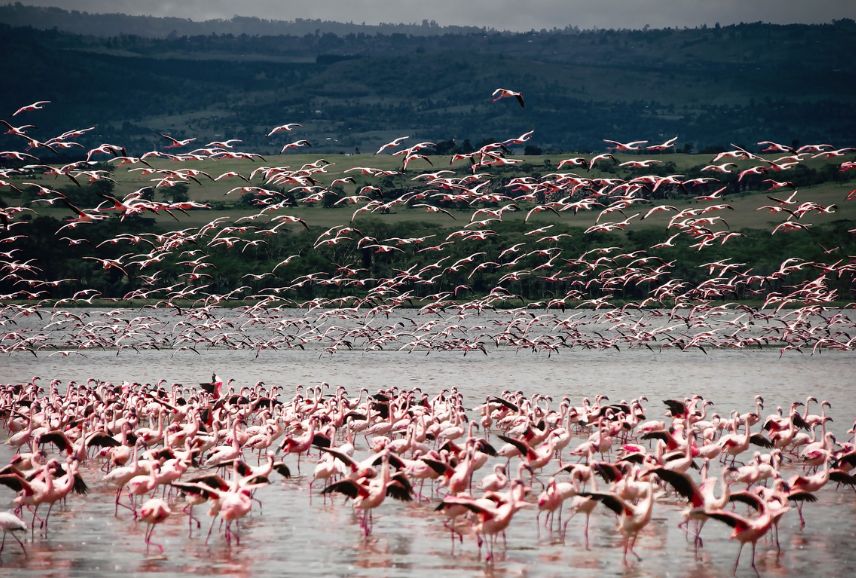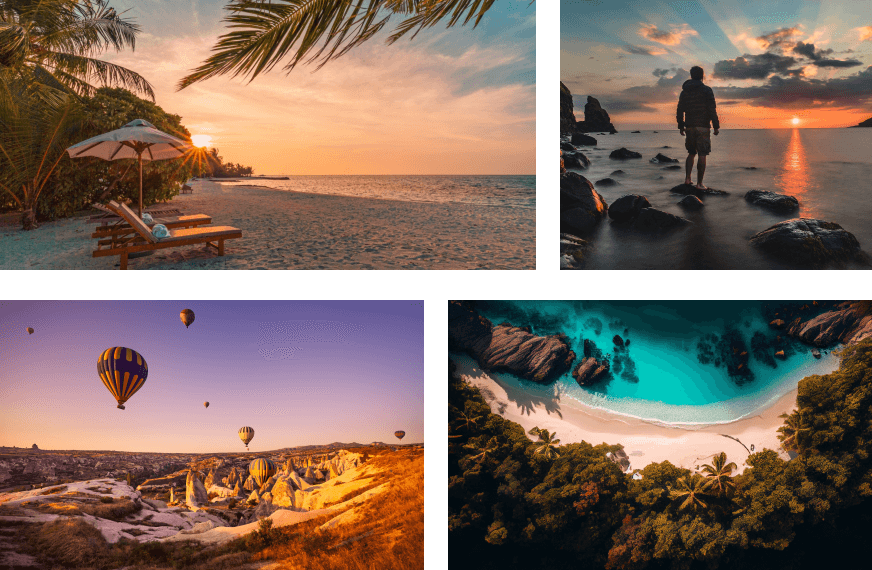
Ngorongoro Crater is a conservation area roughly 110 miles west of Arusha. It covers an area of 8,288 km² (3,200 square miles). Ngorongoro is the world’s largest unbroken, non-flooded volcanic caldera. The area became a UNESCO World Heritage Site in 1979. One of the main attractions in this conservation area is the crater itself. The crater formed when a giant volcano exploded and collapsed on itself some two to three million years ago. It is 610 m (2,001 ft) deep and the crater floor covers 260 km² (102 square miles).
Although Ngorongoro lies only three degrees south of the Equator the altitude of the crater results in a cooler climate than that of surrounding areas. The rim of the crater is about 2200 m (7218 ft) in elevation and is noticeably cooler than its floor. A visit to this magnificent crater is recommended anytime of the year, with the main rainfall occurring between November and May. The dry season extends from June to October, which is also the cooler time of year. The rim of the crater will experience some precipitation year round. The lowest, driest and warmest parts of the conservation area are in the western plains and in the Olduvai Gorge. Moist air moves inland from off the Indian Ocean on Tanzania’s east coast and is pushed upwards. When it meets the crater highlands it forms clouds and creates high rainfall on the south eastern slopes of the crater rim while depriving the western side of any moisture. The average rainfall on the western plains is around 500 mm (20 inches) whereas the side facing the easterly trade winds receives around double this. The crater floor receives an average of 700 mm (almost 28 inches) and the crater rim often receives more than this.
A wide variety of vegetation can be found in and around Ngorongoro Crater and it varies according to location.
Grasslands and wooded areas, such as the Lerai Forest, cover much of the crater floor. There is also the stunning soda lake in the crater’s center. The lake is seasonal and water levels vary greatly from wet to dry season. Fire is used to control vegetation in the crater.
The main trees found in the crater are the Yellow Fever Acacia, Quinine and Strangler Fig trees. Other vegetation in the highlands, rim and walls of the crater include: blue wandering jew (Commelina denguallensis), broad leafed croton (Croton macrostachyus), candelabra tree (Euphobia candellabrum), cape chestnut (Calodendrum capensie) crotalaria (Crotalaria agatiflora), flame lily (Gloriosa superba), giant St. John’s Wart (Hypericum revolum), giant vernonia (Vernonia auriculifera), khaki weed (Tagetes minuta), larkspur (Delphinium leroyi), nuxia (Nuxia congesta), peacock flower tree (Albizia bummifera), pillarwood (Cassipourea malosana), pink pavonia (Pavonia urens), Redthorns (Acacia lahai), smelly cucumber (Momordica foekida), steudner’s dracaena (Dracaena steudneri), tattoo plant (Plumbago zeylanica), tree euphobia (Euphobia bussei) and wild banana (Emfepe ventricosum).
An estimated 25,000 larger mammals are resident in the caldera including a population of approximately 6000 resident wildebeest, about 28 highly endangered black rhinos and around 70 lions.
In fact, all of the big five animals can be found here. The big five are: buffalo, elephant, leopard, lion and rhinoceros. Leopards may be seen lounging in the spectacular Lerai Forest that blankets part of the crater floor while cheetahs move surreptitiously in and out of the crater. Many of the smaller carnivores including the black backed jackals and even the nocturnal serval cat can be spotted here. Unfortunately, due to the physical nature of the crater, the population of some of the animals – particularly lions – is grossly inbred, and genetic issues continue on with each new generation. There are not many male lions that come in from outside the crater which severely limits any variations in the gene pool.
Interesting fact: Due to the cooler weather at the crater the manes of the male lions are darker in color than those found in the Serengeti or elsewhere in Tanzania.
Other animals that can be seen in the conservation area include: Baboons, dikdiks, elands, Grant’s and Thomson’s gazelles, gnus, hyenas, reedbacks, Vervet monkeys, warthogs, water bucks and zebra and birds include: Buzzards, ostrich, plover, raptors, white storks and yellow wagtails.
Animals that are noticeably not present in the crater are impala and giraffes. Why are these animals absent from the crater floor? The walls of the crater are too steep for the giraffes and even if they could make it down to the bottom there is not enough food for them or the impalas.
There are several activities to do in the conservation area and it all depends on your interests and energy levels! Safaris drives in the crater are from 6am (an early start is highly recommended) to 6pm daily. A visit to Olduvai Gorge and to a Masai village is also recommended – particular for those with an interest in anthropology, geology and local culture. Bird watching and nature walks along the rim of the Ngorngoro Crater and Empakaai Crater are a nice way to end the day. Or for those who want to take it all in without breaking a sweat, sundowners overlooking the rim of the crater work a treat.

| Destination | Ngorongoro Crater |
|---|---|
| Location | Ngorongoro Crater, Tanzania |
| Attraction | An excellent opportunity to see all of the big five animals. |